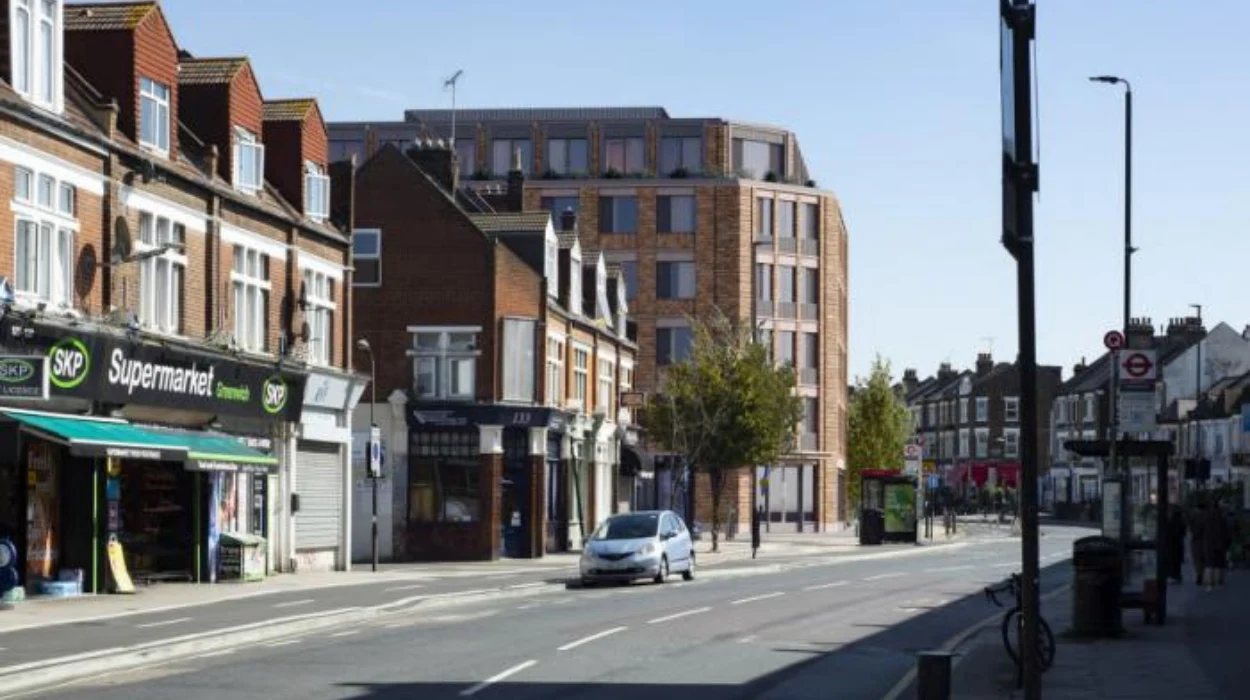Greenwich (Parliament Politics Magazine) – Greenwich Council approves plans for three student blocks on Woolwich Road, despite concerns over proliferation of similar developments in the borough.
On the site of the old Speedy Services tool rental store on Woolwich Road, the blocks would add 190 student rooms.
The store had previously been designated for conversion into regular apartments. Although Greenwich council members accepted this plan in 2022, the property was later sold to another developer.
The tallest of the three interconnecting student housing blocks that AVF Developments has now proposed to develop would be seven stories high.
Council members stated at a planning meeting last week (February 20) that the revised plans looked better than the previous scheme, which consisted of a single continuous block.
In spite of this, a neighbor who lives in Dandridge Close, which faces the development site, expressed worry that the blocks were too high and would prevent his house from receiving enough sunshine.
Council members, however, expressed greater concern about the volume of student block plans that were being presented to the borough’s planning committee.
“I’m a bit sceptical of some of these schemes which are a way of ramping up the value of the site without any real intention to deliver it,”
said Cllr Dave Sullivan.
I do think that quite a lot of these have been in the pipeline, we’ve consented to them and I haven’t seen any sign of them yet.”
The Woolwich Road blocks’ development may begin early next year, according to the developer.
As part of already approved plans, council members also mentioned that 3,700 additional student rooms were already on the way.
Recently, Woolwich received planning clearance for two student blocks, one of which is located at Riverside House, Greenwich, the location of the council’s former offices.
Concerns about the 28,000 families on the borough’s housing list were also voiced by Cllr. Gary Dillon, the chair of the planning committee.
He went on to say that the modified plans no longer include the conventional dwellings that were part of the site’s original plans.
According to the developer, student housing can assist free up family homes for individuals in need even though it does not immediately contribute to Greenwich’s housing supply.
Studies indicate that there is still a considerable shortage of student housing in the region, the company continued.
Additionally, Cllr. Dillon questioned whether the location would have adequate trash management.
He said:
“You’ve got a number of students and as we’re well aware they like eating pizzas and takeaways and god knows what.
What I’m asking is how is the building supervised and how will you make sure that the recycling is recyclable and not contaminated.”
Despite councillors’ misgivings, the planning committee voted to approve the scheme.
Cllr Dillon said:
“I will be supporting the application because student accommodation is classed as affordable and a necessity.”
So, trying to get this to an appeal would cost us a lot of time and money and we probably have little chance of winning because there is a precedent set from the previous application that was approved.”
What impact will these student blocks have on local businesses?
Consumer spending rises dramatically when students move into these accommodations. This surge of new clients can help local stores, eateries, coffee shops, and service providers, which could result in higher profits and even growth.
Local citizens, both expert and unskilled laborers, are employed during the student block construction period. After they are up and running, these facilities need constant administration and maintenance personnel, which creates long-term job possibilities.
By providing a steady and growing clientele, the existence of student housing can encourage entrepreneurship. This setting fosters the growth of new companies that target the requirements of students, like coffee shops, bookshops, and convenience stores.
By converting unused spaces into thriving student communities, student blocks can aid in urban regeneration. This can improve local infrastructure and draw in further investment, increasing the area’s appeal to both inhabitants and companies.


